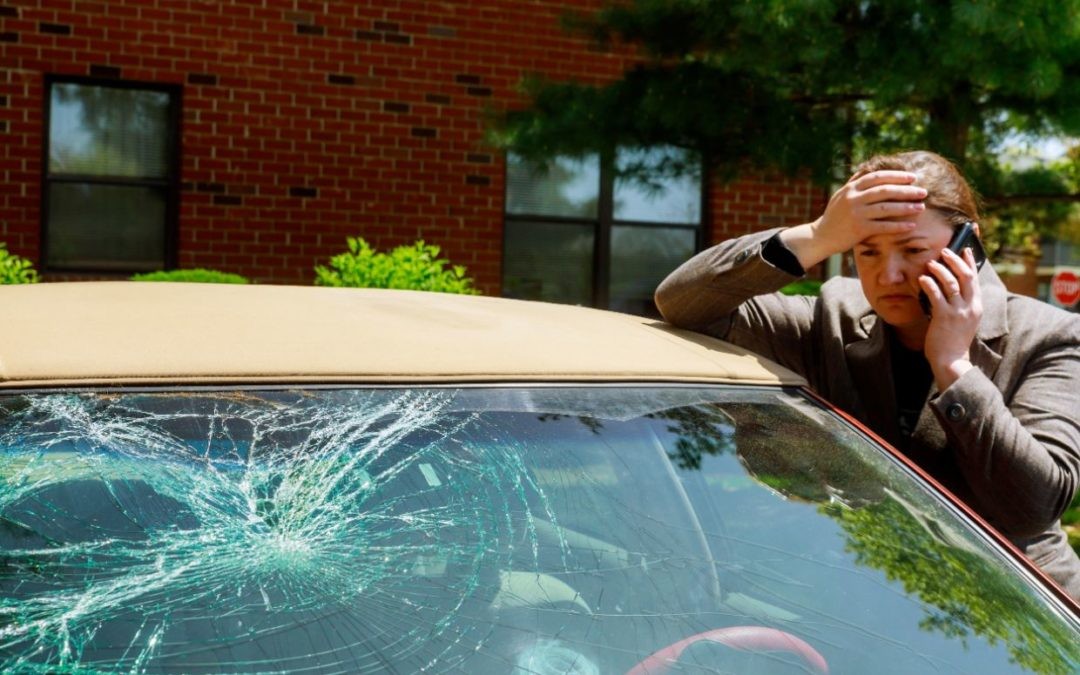Windshield damage, from minor chips to major cracks, is a common headache for drivers. Whether it’s a pebble kicked up on the highway or the aftermath of harsh weather, a damaged windshield can be both unsightly and a safety concern. When faced with this issue, one of the first questions that comes to mind is usually about cost and insurance coverage. Understanding what type of auto insurance pays for windshield repair can save you money and stress. This article will break down the types of insurance that typically cover windshield repairs and replacements, helping you make informed decisions about your coverage and claims.
Comprehensive Coverage: Your Windshield Savior
Generally, comprehensive coverage is the type of auto insurance that most often pays for windshield repair or replacement. Comprehensive coverage, also known as “other than collision” coverage, protects your vehicle from damages that are not caused by accidents with other vehicles. This includes events like:
- Vandalism and Theft: If your windshield is damaged due to vandalism.
- природные бедствия: Damage from hail, windstorms, falling objects (like tree branches), and other natural disasters.
- Animal Damage: Impact from animals.
- Road Hazards: Damage from flying debris, rocks, or gravel kicked up from the road.
 Woman making a phone call next to broken windshield
Woman making a phone call next to broken windshield
Because windshield damage frequently falls under the “road hazards” or ” природные бедствия” categories, comprehensive coverage is your primary insurance for these types of repairs. It’s important to note that comprehensive coverage is usually an optional addition to your car insurance policy, unlike liability coverage which is legally required in most states.
Full Glass Coverage: A Specialized Add-on
While comprehensive coverage is the standard for windshield repair, some insurance companies offer full glass coverage as an optional add-on, especially in areas prone to harsh weather conditions or road debris. Full glass coverage is specifically designed to address windshield and auto glass damage.
Key features of full glass coverage often include:
- Lower or Zero Deductible: One of the biggest advantages of full glass coverage is that it frequently comes with a waived deductible or a very low deductible (even $0 in some cases). This means you may not have to pay anything out-of-pocket for windshield repair or replacement, or pay a minimal amount.
- Focus on Glass Damage: This coverage is laser-focused on glass components of your vehicle, ensuring that repairs or replacements are handled efficiently without impacting your broader comprehensive coverage limits or deductibles for other types of claims.
- Repair over Replacement Focus: Many full glass coverage plans encourage repair over replacement for minor chips and cracks, which can save both time and money, and prevent a small issue from becoming a larger, more expensive one.
If you live in an area where windshield damage is common due to road conditions or weather, considering full glass coverage can be a worthwhile investment.
Collision Coverage: Not Typically for Windshields
Collision coverage is another major type of auto insurance, but it generally does not cover windshield repair unless the damage is a result of a collision with another vehicle or object. Collision coverage is designed to pay for damages to your car when you are at fault in an accident or when you collide with something, like a tree or guardrail.
If your windshield is cracked because of a car accident, then collision coverage might apply to the windshield damage as part of the broader accident claim. However, for everyday windshield chips, cracks from road debris, or weather-related damage, collision coverage is not the relevant policy.
Liability Coverage: Never for Your Windshield
Liability coverage is the mandatory insurance in most states, and it is designed to protect others if you are at fault in a car accident. Liability insurance pays for the bodily injury and property damage you cause to other people. It never pays for damages to your own vehicle, including your windshield, regardless of the situation.
Deductibles and Windshield Repair Costs
When using comprehensive or full glass coverage for windshield repair, deductibles play a crucial role in your out-of-pocket expenses.
- Comprehensive Deductible: If you file a claim under your comprehensive coverage, you will typically have to pay your chosen deductible before the insurance company covers the remaining cost of the repair or replacement. Comprehensive deductibles can range from $250 to $1000 or more.
- Full Glass Coverage Deductible: As mentioned, full glass coverage often has a separate, lower, or even zero deductible, making it very cost-effective for windshield claims.
The cost of windshield repair or replacement can vary. Minor chip repairs can range from $40 to $100, while full windshield replacements can cost between $250 and $400 for standard vehicles, and upwards of $1000 for luxury cars with advanced features.
Zero Deductible States: Some states, like Arizona, Kentucky, Florida, and South Carolina, have laws that waive the comprehensive deductible for windshield repair or replacement. In these “zero deductible states,” insurance companies are often required to repair or replace windshields without charging a deductible, making it very advantageous for drivers in these locations. However, laws can change, so it’s always best to verify current regulations with your insurance provider and state Department of Insurance.
When to File a Claim vs. Pay Out-of-Pocket
Deciding whether to file an insurance claim for windshield repair or pay out-of-pocket depends on several factors:
- Cost of Repair vs. Deductible: If the repair cost is less than or close to your comprehensive deductible, it might be more economical to pay out-of-pocket. However, with full glass coverage and low or zero deductibles, filing a claim is usually beneficial even for minor repairs.
- Potential Premium Increase: Historically, minor windshield claims were less likely to impact insurance premiums. However, it’s always wise to ask your insurance agent about potential premium increases after filing a claim, especially if you have a history of claims. With full glass coverage, claims are less likely to affect your overall premium compared to using comprehensive coverage.
- Severity of Damage: For minor chips and cracks, repair is often cheaper than your deductible, making out-of-pocket payment sensible. For larger cracks or necessary replacements, especially for expensive windshields with sensors or advanced technology, using insurance coverage is usually the more cost-effective option.
Checking Your Policy and Contacting Your Insurer
The best way to understand what type of auto insurance pays for windshield repair in your specific situation is to:
- Review Your Insurance Policy: Carefully read your insurance policy documents, paying close attention to your comprehensive and any optional glass coverage details, including deductibles.
- Contact Your Insurance Agent or Company: Speak directly with your insurance agent or company representative. They can provide personalized advice based on your policy, location, and the specifics of your windshield damage. They can clarify your coverage, deductible amounts, and the claims process.
By understanding the different types of auto insurance and how they apply to windshield repair, you can navigate these common car issues with confidence and minimize unexpected costs. Always prioritize safety by addressing windshield damage promptly and ensuring you have the right insurance coverage in place.

